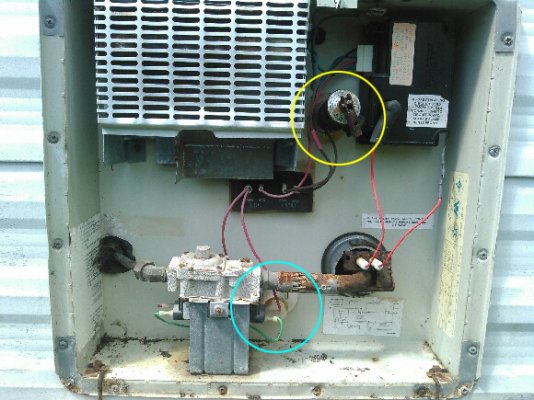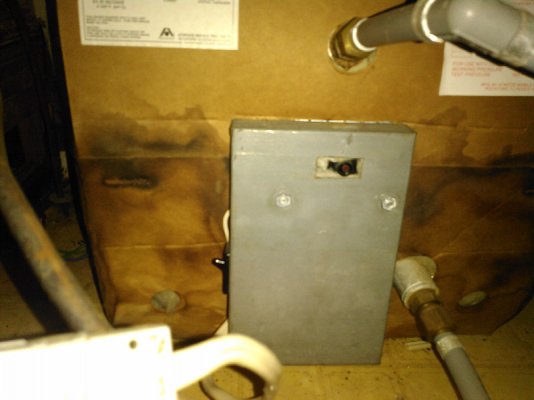PapaRichG
Active member
Please see attached image for details.
I'm going to attempt a flush & clean of my water heater with only a you tube video (https://www.youtube.com/watch?v=IKg0R9oiMP0) for experience. I'm waiting on a Tank Rinser to arrive at Home Depot right now.
1) The pressure relief valve (circled in yellow) is old, rusty, and pointing at an angle towards the "electrical box" on the upper right. Being a perfectionist I'd like to replace it but not sure if doing so will potentially break the pipe thread coming from the tank itself. Any recommendations?
2) The drain valve (circled in light blue) is pointed straight at some wiring. Can I & should I: Unplug those wires before draining? I'm not sure if water hitting the wires or the open connections upon unplugging the wires is the better move. I'm also just assuming that they pop off easily.
3) I actually haven't tested the water heater yet. Should I see if it works before flushing and cleaning? After? Or does it not matter? I'm told it's been close to a year since it was last used by the previous owner.
Thanks as always for your time.
I'm going to attempt a flush & clean of my water heater with only a you tube video (https://www.youtube.com/watch?v=IKg0R9oiMP0) for experience. I'm waiting on a Tank Rinser to arrive at Home Depot right now.
1) The pressure relief valve (circled in yellow) is old, rusty, and pointing at an angle towards the "electrical box" on the upper right. Being a perfectionist I'd like to replace it but not sure if doing so will potentially break the pipe thread coming from the tank itself. Any recommendations?
2) The drain valve (circled in light blue) is pointed straight at some wiring. Can I & should I: Unplug those wires before draining? I'm not sure if water hitting the wires or the open connections upon unplugging the wires is the better move. I'm also just assuming that they pop off easily.
3) I actually haven't tested the water heater yet. Should I see if it works before flushing and cleaning? After? Or does it not matter? I'm told it's been close to a year since it was last used by the previous owner.
Thanks as always for your time.


